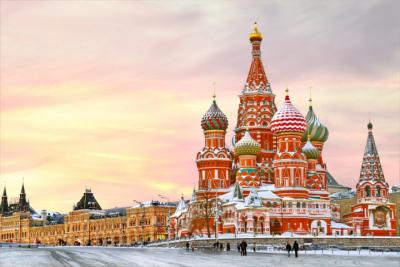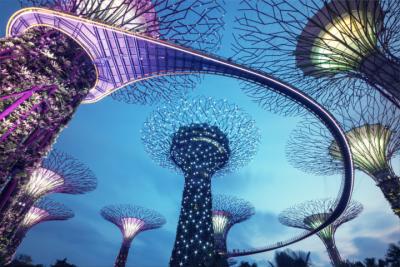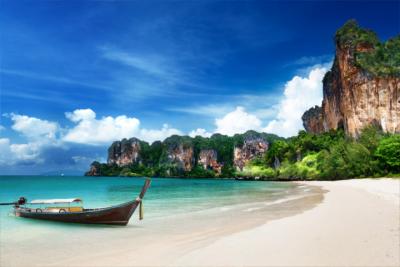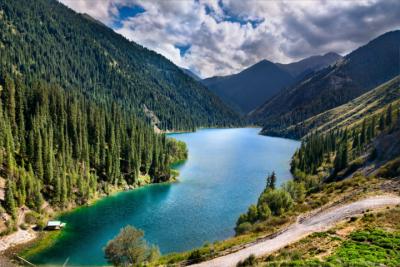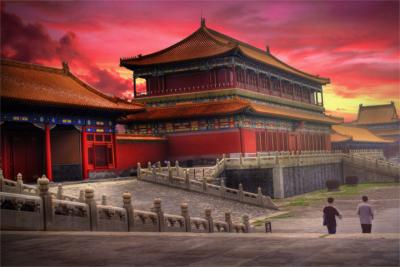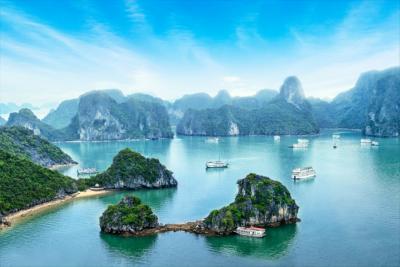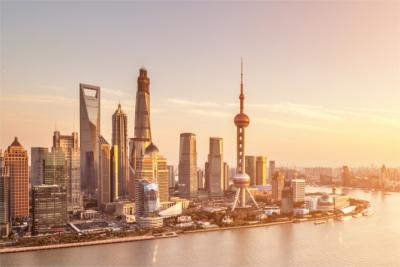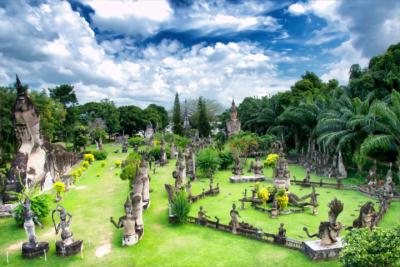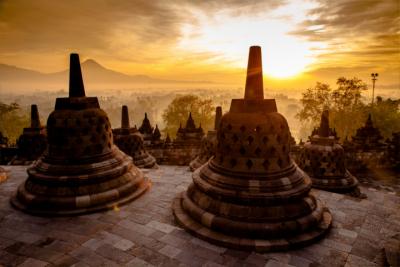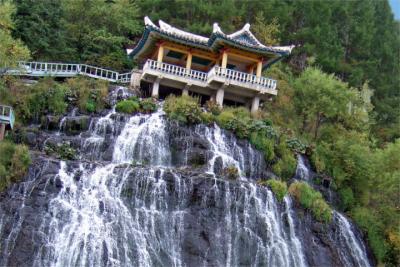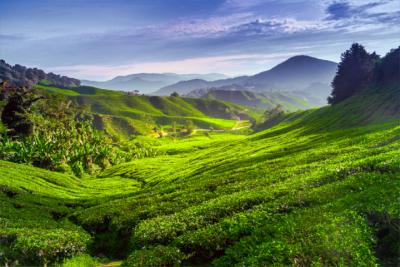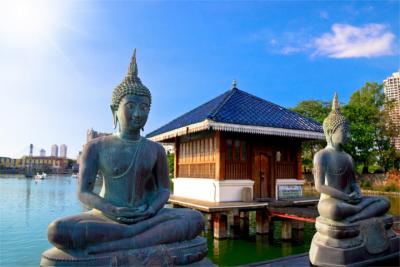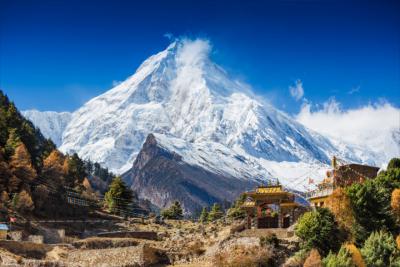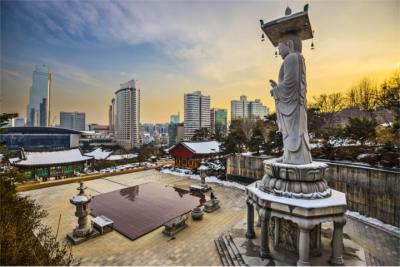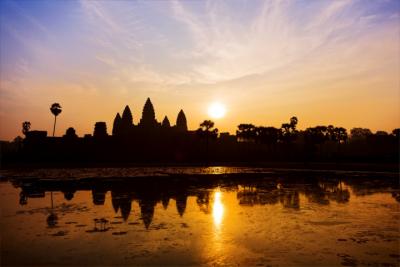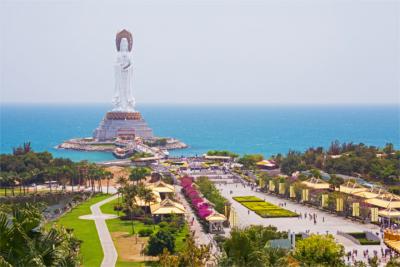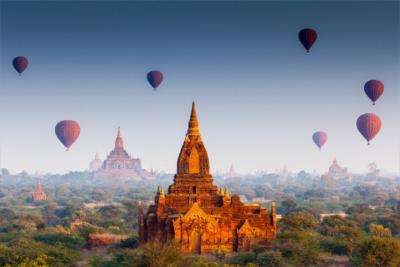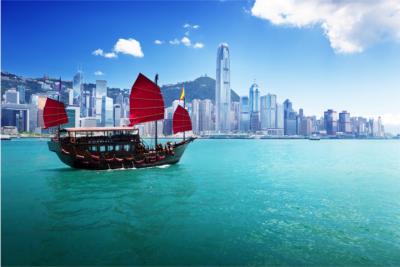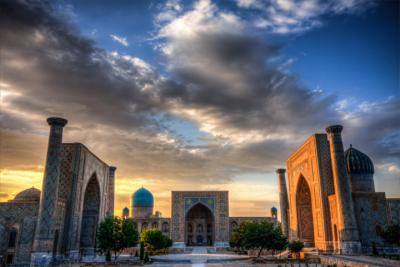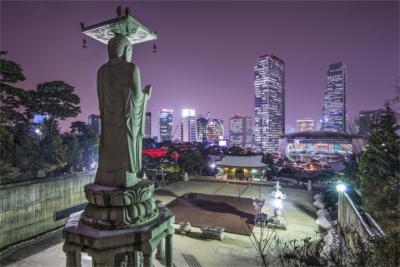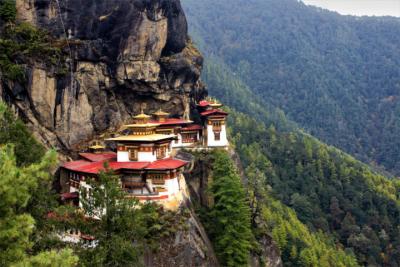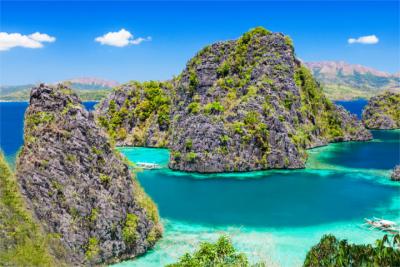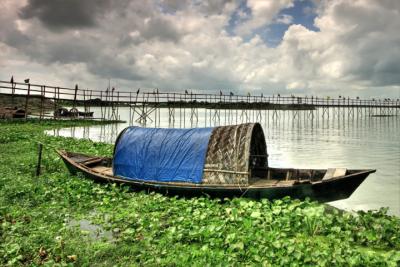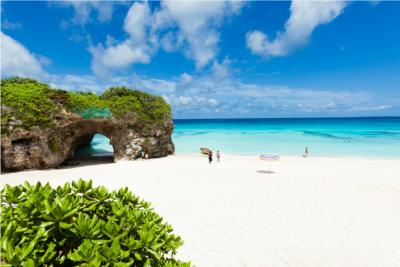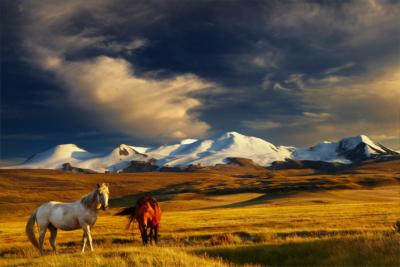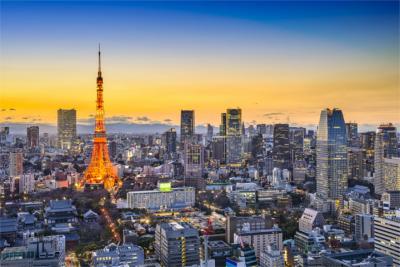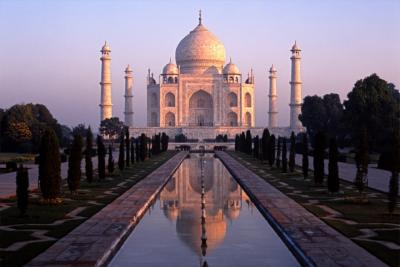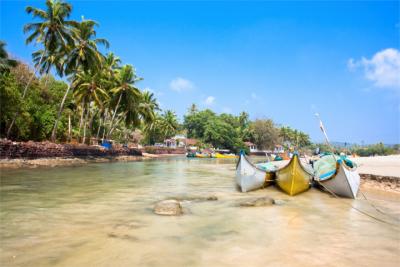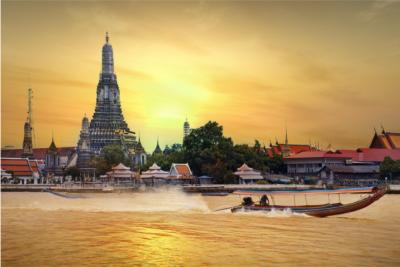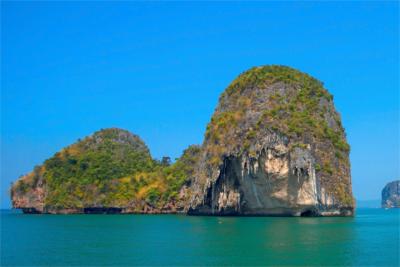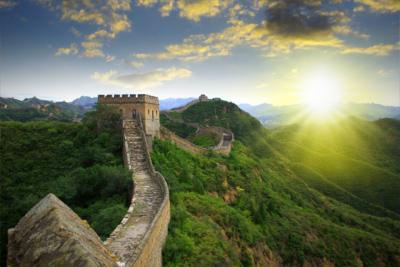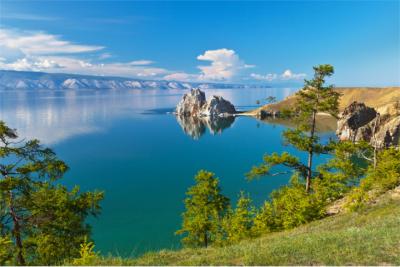Travel Offers
Travelmyne Featureprint
Distance
Japan - In the Land of the Rising Sun
Travellers do not only like Japan for its unique landscape with snowy peaks in the middle of cherry blossoms but also for its balanced cuisine and the way of living in accordance with body and soul. Japan is a country of both tradition and modernity, in which age-old culture unites with modern lifestyle.
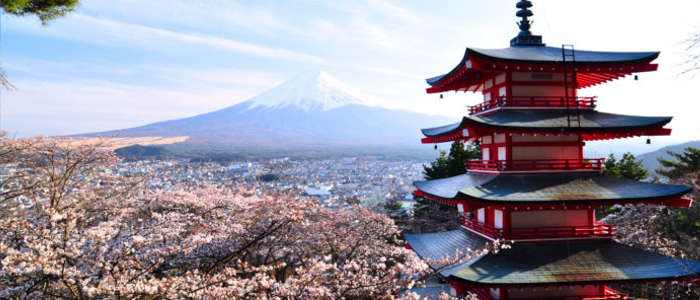
Geography - Four islands form a state
Japan is the fourth biggest island on earth and can be divided into four main islands. Shikoku and Kyushu constitute the south of the island state, Hokkaido the north. The biggest island Honshu lies in the centre. In addition, 6,848 small islands surrounding Japan belong to the country. The central state consists of eight regions, which are again divided into smaller prefectures. The island is located in the Pacific Ocean and its closest neighbours are Russia, Korea and China. The climate differs considerably from north to south and comprises several climate zones. While the northern Hokkaido is dominated by cold temperate climate with a lot of snow in winter, the temperatures in the southern Okinawa can be subtropical. It can also get very warm and humid in the island's centre in summer. The annual typhoon season from June to July can cause monsoon-like rain showers.

Nature - Mount Fuji's peak is covered in snow at all seasons
Japan is called the "Land of the Rising Sun" because it is located in the east - from a western perspective. Its islands are characterised by a great variety of natural regions. Large parts of the country are still covered in mountain forests. They provide shade in summer and lead up to Japan's highest mountain - Mount Fuji with its snowy peak on Honshu. Mount Fuji is not actually a mountain but a volcano. The impressive region has been part of the UNESCO World Natural Heritage since 2013. This peak, which is 3,776 metres high, is the crown of a mountain chain which takes up almost two thirds of the country. As there are not many flat plains, terrace cultivation proved to be most effective for growing rice and tea in Japan. Lakes, rivers, waterfalls - Japan is blessed with natural beauty. Travellers who are planning a beach holiday do probably not think of the lively, trendy Japanese nation first. But the country, which is enclosed by the Pacific Ocean, offers several wonderful beaches which are excellently suited for bathing and summer holidays. From Tokyo you can easily reach the white sandy beach Shirama in Shizuoka. Divers' hearts will leap for joy in Kagoshima. There is a great diving entrance into the deep blue sea at the beach section Amami Ōshima. However, Japan's most beautiful beach is the Sunayama Beach. The crystal-clear water in front of the paradisiacal beach invites visitors to relax and dream. You should keep your eyes peeled while you are in the water because many of the numerous oysters still contain real pearls. Despite its small size, Japan accommodates an impressive biodiversity. Hikers can come across Asian black bears and shy sika deer here. With a bit of luck, you may also spot the Japanese serau, a goat-antelope, or the Japanese macaque. Looking up into the sky, travellers face an extraordinarily rich fauna. Japan is home to over 500 different species of birds with the exotic green pheasant as the country's national bird.

Natural sights - Fragrant cedars and bubbling springs
Travellers who want to get to know the whole variety of Japan's natural beauty should visit the Nara Park. The area of over 500 hectares is populated by more than 1,000 animals, including deer. In the middle of this natural centre you find a calm and gigantic (16 m) Buddha statue. The UNESCO discovered Japan's uniqueness a long time ago. Besides the Japanese goddess Fuji and the surrounding regions, the fragrant cedar forest of Yakushima and the scenic beech forest of Shirakami with its breathtaking waterfalls are part of the World Natural Heritage. Japan's active grounds are apparent from the variety of volcanoes and hot springs - the onsens. In health resorts like Beppo visitors have the opportunity to dive into thermal springs and forgetting their stressful everyday life for a moment. With renewed strength you can climb Japan's national symbol Mount Fuji. The country's only glacier is located at a height of 1,947 metres and is called Gassan. It is used for skiing and winter sports during peak season but this impressive region is also worth a visit at other times of the year. The area around the town Tottori in southern Honshu looks completely different. Japan actually has a little desert - the Tottori Sand Dunes. These sand dunes, which are 16 kilometres long, are part of the Sanin Kaigan National Park and paint a strange picture of the Japanese island. Travellers who want to see even more should set out to Okinawa Island south of Japan, which shows the country's tropical side. A humid jungle landscape, mangrove forests and coral reefs characterise this impressive and worthwhile island.

Culture - The magic of the geishas
Japan ranks tenth among the world's most populous countries. The island chain already started breaking away from China and constituting a separate state in the 5th century. A particularly significant time with regard to the country's culture was the Edo period in the 17th century. The samurai and their martial arts were incorporated into the civil service during that time. Traditional garden design, flower design, the Kabuki theatre and not to forget the tea ceremony in the tea house of the geishas all originated in this period and are still characteristic of Japan. The magic of the geishas - the guardians of traditional Japanese culture - reached its climax in the 18th and 19th century. A geisha is a hostess, a singer and musician, a charming entertainer and a mistress of cultivated conversation - she is a living masterpiece. This form of art has been preserved to the present day and young woman are still trained as reputable geishas. In the borough Gion in Kyoto, tourists can experience the geishas' elaborate and laborious clothing and make-up at first hand. They have the opportunity to put on an authentic geisha kimono, make-up and typical jewellery. Of course, men do not go short either. They can transform into samurai warriors. Japan has developed into an advanced industry and export nation with the high-tech industry as the most important branch. In addition, the Japanese animes, manga or the Japanese pop music are also known worldwide. Despite the increasing internationalisation, the Japanese remain their own culture and customs. They value etiquette, politeness and the hierarchic manners between old and young people or between employees and superiors. They have a word for "no" but it is rarely used. Therefore, travellers should not be surprised when they ask for directions and always hear the answer "yes" even though the Japanese person does not know the right direction. As it is common in other Asian countries, it is unacceptable for Japanese people to lose their face in front of other people.

Cultural sights - The imperial city of Kyoto
Japan is a great destination for those planning cultural holidays. The UNESCO counts over 30 World Cultural Heritage sites, not including the temples, pagodas, statues and shrines. You find the heart of Japanese culture in the former imperial city Kyoto. The imperial household ruled the country for eleven centuries and was both its cultural and religious centre. It is worth a visit all year but looks especially scenic during the time of cherry blossom in April. The city also accommodates the country's most beautiful gardens and temples. If you want to dive even deeper into the Japanese traditions and customs, you should not miss out on the country's great variety of museums. They explain and illustrate all eras and their most important achievements. A popular destination is Matsumoto Castle in the city of the same name. It is also called "Crow Castle" because of its dark colour. Another magnificent structure is the aristocratic estate Himeji Castle. It is the oldest building of the 17th century and consists of 83 separate buildings altogether. In contrast to Matsumoto Castle, its facade is painted with shades of white, which is why its general byname is "White Heron Castle". The historical villages of Shirakawa and Gokayama appear particularly native. Every visitor who wants to have experienced the real Japan should have spent one night in a ryokan, a Japanese wooden house. These traditional guest houses are up to 100 years old and many of them are equipped with the typical built-in baths. The Hiroshima Peace Memorial Park is worth a visit and tells its own story. The same is true of the Shinto shrine in front of Itsukushima Island.

Experience - The Hanami in Japan
Japan is really popular with tourists, travellers and adventurers at the moment. Japanese pop music, high technology, the sparkling metropolis and capital Tokyo - all this makes the Pacific country stand out regarding music, fashion and lifestyle. One example is the Hotel Park Hyatt Tokyo - the shooting location of "Lost in Translation". The gigantic complex does not only offer a breathtaking view over Tokyo's roofs but also displays an upmarket and elaborate design. You can go shopping on the avenue Omotesando in Tokyo. Stylish shop assistants in fashionable shops and boutiques present their customers with the newest creations of Japanese and international fashion. Visitors find a very different but equally typical way of shopping on the great Tsakiji fish market in Tokyo. You can buy Tuna which weighs several tons or take part in fish auctions, where you can bid on sushi and sashimi - of course you can try the delicacies beforehand. The Japanese cuisine is generally considered one of the best and most comprehensive on earth. Food preparation does not just serve the purpose of fighting hunger, it is an attitude to life and meant to contribute to the health of mind and body. In contrast to most other Asian cuisines, the Japanese go without unusual and strong spices or the use of oil for frying and cooking. Rice is a basic ingredient and so significant that it is regarded as the national symbol. It is part of almost every meal. Fish - often raw - and sea food also play a major role. Meat like pork and beef only became popular recently and was prohibited for centuries. Nowadays you find meat dishes on every menu. The best known dishes such as the sashima (thin raw pieces of fish), sushi or the miso soup are not only popular in Japan but worldwide. The same is true of the marinated teriyaki meat, yakitori (grilled skewered chicken) or the stew sukiyaki. You traditionally have tea or sake with your meals. The latter can be enjoyed cold or warm and tastes best in a characteristic izakaya, a kind of pub. The most beautiful Japanese season is the time of cherry blossom. It turns the country into a sea of pink blossoms and the parks and temples are filled with people from all over the world. The most wonderful attraction is the Hanami - the cherry blossom festival - in Yoshino. Those interested in Japanese sports should not miss out on a real sumo wrestling match. Visitors can watch the heavyweight martial art and get close to the sumotori to find out what the salt in the ring is about. If you want to set out on a journey into your own self, you should surrender to the calm and peace of the Buddhist Okunoin cemetery in Koya-san. In fragrant cedar forests you get to know the life of the Buddhist monks and have the opportunity to find inner peace.

Activities - From the mountain into the valley and into the sea
Being active in Japan is easy. The country's only glacier Gassan presents a wonderful resort for skiing and tobogganing between April and July. Winter sports centres are located on Hokkaido or on the main island Honshu in the town Nagano in the prefecture of the same name. The annual Sapporo Snow Festival also takes place there and is an absolute highlight in winter. The karaoke bars are a must on a journey through Japan. Many of them offer the opportunity of renting a private room so that people can invite their friends to sing along to their favourite songs. The Izu Peninsula promises relaxation and recreation as you can treat yourself to a traditional massage there. The Japanese also pride themselves on being a golf nation. Golf is considered a status symbol among the so-called "salarymen", the wealthy office workers and businessmen. Both the beaches of the main island and the surrounding islands offer great conditions for swimming, diving and windsurfing. You should, however, mind the season because the Japanese winter can be very cold. A must for visitors all year are the pilgrimages in the Kii Mountains or a hike along the legendary Nakasendo. On a route of over 500 kilometres, travellers get to know Japan's historical rural side and can stop off at a tavern after a long walk.

Information
Apart from the typhoon season in spring, Japan is a suitable travel destination throughout the year. Winter sports fans get their money's worth between December and March in the centres in Honshu and Hokkaido. The biggest airports are the Tokyo Haneda and Tokyo Narita Airport. Worth mentioning is also Kansai International Airport on an artificially created island in the middle of the ocean. Japan has a very well-developed infrastructure. Tourists reach even the smallest towns by bus, train and underground without any problems. Therefore, it is not worth renting a car in the big cites. Furthermore, there is left-hand traffic in Japan and you have to pay a toll on the motorway. Travellers who do not want to arrive by plane can travel into the Far East on a cruiser. Several operators offer this route. You should, however, note that this means of transport takes several weeks.
Japan is one of the best-known travel destinations on earth and delivers what it promises: exciting landscapes, an excellent cuisine and a metropolis which is virtually emits youth, trends and ambition. The inhabitants' exotic mentality and the fascinating geographical position make Japan attractive to lovers of both culture and nature.

